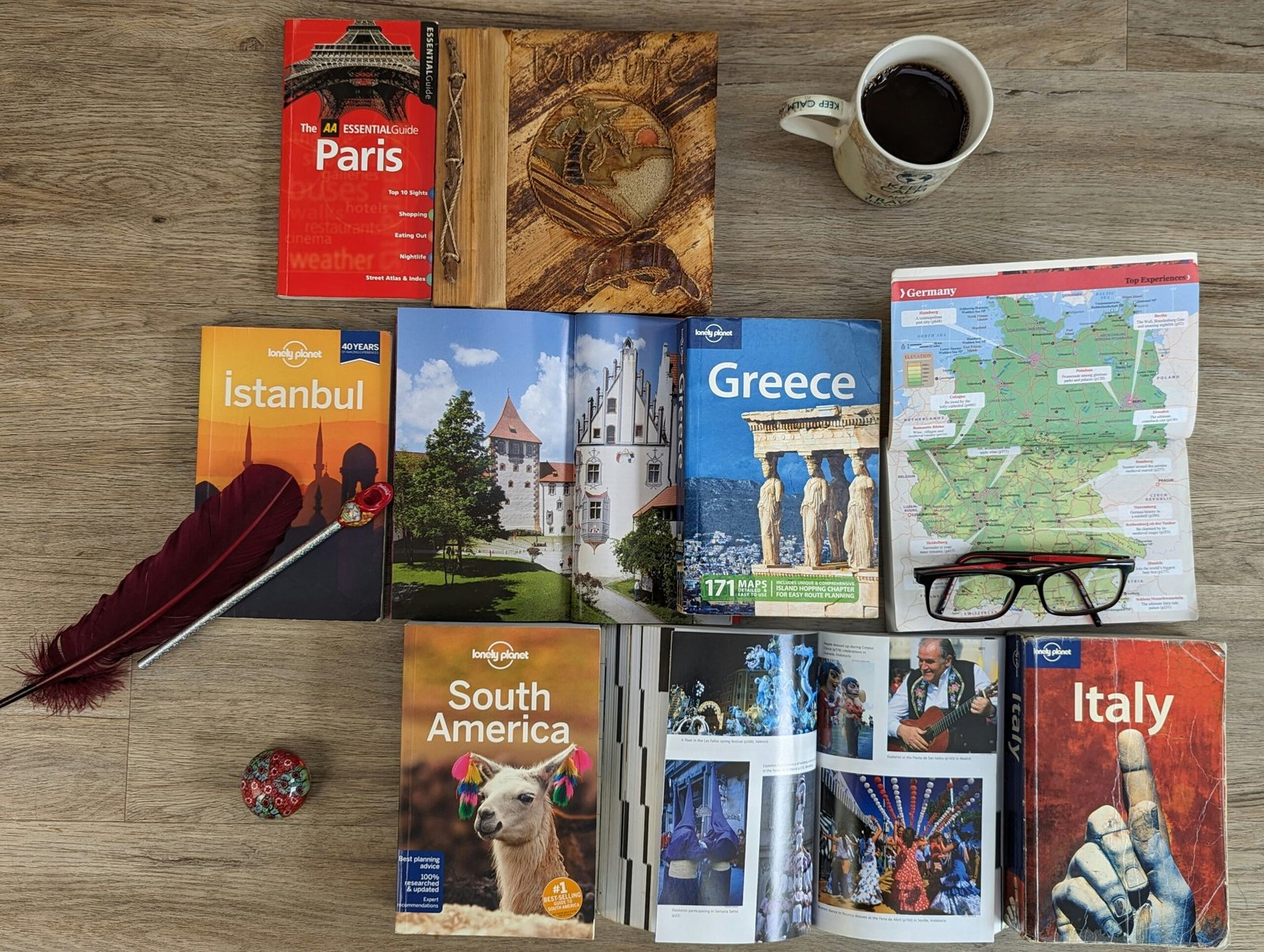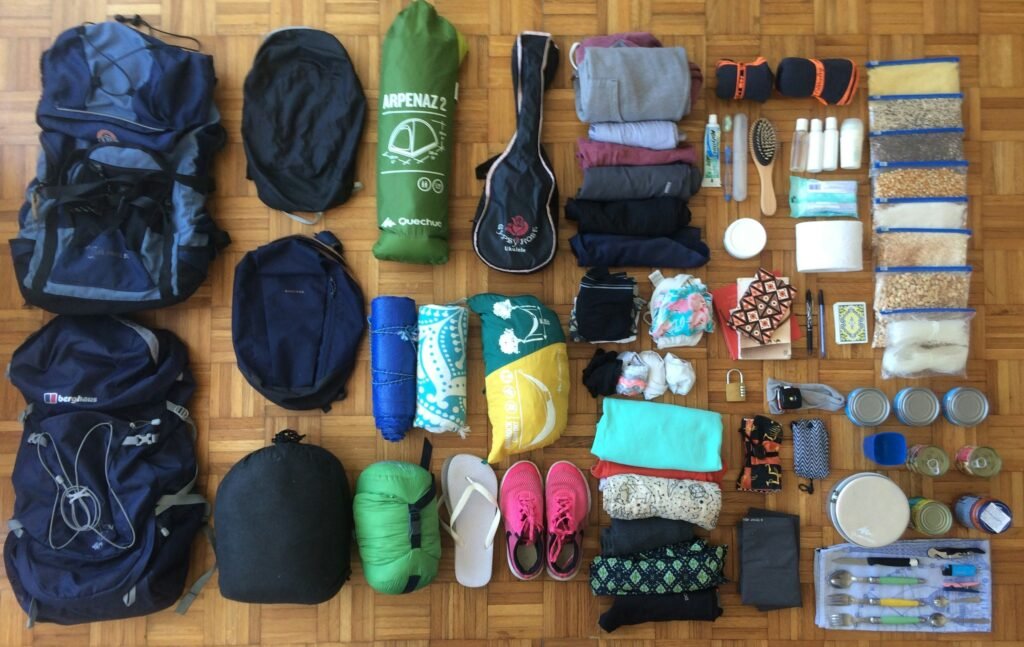Introduction to Long-Term Travel Planning
Long-term travel, defined as journeys that extend over several months, has gained remarkable traction among diverse groups of travelers in recent years. This growing popularity can be attributed to factors such as the increasing availability of remote work opportunities, advancements in travel technology, and a rising desire for immersive cultural experiences. The concept of long-term travel offers individuals the chance to break free from routine and explore various destinations in greater depth, ultimately leading to personal growth and unforgettable memories.

Engaging in a long-term travel journey can yield numerous benefits. Not only does it facilitate a deeper understanding of different cultures and lifestyles, but it also provides ample time for travelers to discover hidden gems that may be overlooked during shorter trips. Furthermore, the opportunity to learn new languages, taste local cuisines, or participate in traditional customs can significantly enrich the travel experience. Long-term travel encourages self-reflection and adaptability, attributes that can enhance personal development and foster a greater appreciation for diversity.
Nevertheless, embarking on a long-term adventure necessitates careful planning. An organized approach is crucial to avoid common pitfalls that may lead to unnecessary stress and challenges. Key considerations include budgeting, itinerary creation, accommodation arrangements, and ensuring that all travel documents are in order. Additionally, it is vital to prioritize health and safety, both while on the road and when transitioning between different countries. Establishing a solid plan allows for flexibility, making it easier to adapt to unforeseen circumstances while maintaining a sense of direction and purpose throughout the travel experience.
Adopting a structured perspective on long-term travel will ultimately enhance enjoyment and reduce anxiety. By investing time in planning, travelers can embark on their journeys with confidence, fully immersing themselves in the adventure that lies ahead.
Setting Your Travel Goals
Defining travel goals is an essential first step in planning a long-term trip that aligns with your personal aspirations and motivations. By clarifying what you hope to achieve during your travels, you can create a framework that guides your decisions. Start by considering the destinations that intrigue you the most. Are there specific countries or regions that resonate with your interests, whether they be natural beauty, urban landscapes, or historical significance? Researching potential locations can help you uncover hidden gems that might become the highlights of your journey.
In addition to geographical aspirations, it is crucial to contemplate the types of experiences you wish to gain. Are you seeking cultural immersion through local traditions and cuisines, or does the thrill of adventure activities like hiking, diving, or skiing appeal to you? Alternatively, you might prioritize relaxation by opting for serene beach locations or wellness retreats. Each of these experiences can provide unique insights and enrich your travel narrative.
Self-discovery is another significant aspect of travel that cannot be overlooked. Many travelers embark on journeys with the intention of gaining a new perspective on life, understanding different cultures, or even engaging in personal growth. Reflecting on your motivations can aid in tailoring your itinerary to suit your personal objectives. Consider journaling or discussing your aspirations with fellow travelers to refine your thoughts.
Furthermore, ensure that your goals are balanced geographically, experientially, and personally. This thoughtful approach will not only enhance the journey but also contribute to a more fulfilling travel experience. As you continue to establish your travel goals, remember that these objectives will serve as your compass, guiding you through the planning process and providing clarity throughout your long-term trip.
Budgeting for Your Adventure
Budgeting is a pivotal step when planning a long-term trip, as it helps travelers to frame their spending and save money to ensure a fulfilling experience. The first step in effective budgeting is setting a realistic budget that factors in all potential expenses. Start by determining how much you can afford to save before the trip, and consider your sources of income during your travel, such as remote work or freelance opportunities. A detailed financial plan allows you to visualize your entire trip’s costs and create a spending range that aligns with your travel goals.

Estimating expenses is a crucial component of this process. Begin by researching destinations to understand the local cost of living, accommodation options, transportation, food, and activities. For instance, some countries may offer affordable accommodation while others may necessitate higher daily expenses. Utilize online resources or travel forums to gather insights about daily averages. It’s beneficial to categorize your expenses into fixed costs, like flights and accommodation, and variable costs, such as dining out and entertainment, which may fluctuate during your adventure.
Additionally, finding ways to save money during your trip can significantly stretch your budget. Consider alternatives like house-sitting, volunteering in exchange for accommodation, or utilizing public transportation over taxis or rental cars. Cooking your own meals instead of dining out can also lead to significant savings. Furthermore, make use of discount cards for attractions or seek out free community events in the areas you are visiting. By planning to include free or low-cost activities when setting your budget, you can enhance your travel experience without compromising your financial health.
In conclusion, successful long-term travel hinges on effective budgeting. By establishing a realistic budget, accurately estimating expenses, and identifying saving strategies, travelers can enjoy their adventures without financial stress and focus on creating lasting memories.
Creating a Flexible Itinerary
When planning a long-term trip, developing a flexible itinerary is crucial to enhancing the overall travel experience. A well-structured itinerary should allow for spontaneity while ensuring that logistical considerations are taken into account. The first step in this process is to conduct thorough research on potential destinations. Utilize travel guides, blogs, and various online resources to understand the cultural, historical, and natural attractions of each location. This initial phase will help you formulate a curated list of must-see sites that align with your personal interests and preferences.
Once you have identified key destinations, prioritize them based on factors such as geographical proximity and available transportation options. This prioritization ensures that you can efficiently navigate from one location to the next, minimizing travel time and maximizing your experiences. Consider creating a framework that outlines your travel dates, but refrain from over-scheduling your days. A flexible itinerary allows you to adapt to unplanned events or opportunities that may arise during your journey. For instance, if you hear about a local festival or a hidden gem from fellow travelers, having unstructured time permits exploration without the burden of strict commitments.
Moreover, when mapping out your itinerary, it’s important to include buffer periods that account for potential delays or changes in plans. This approach enables you to embrace the unexpected, transforming unforeseen circumstances into enriching experiences. Additionally, remain open to adjusting your itinerary as you travel, as local recommendations or shifting moods can lead you to alternate adventures. In this way, you can foster a sense of spontaneity and excitement throughout your long-term trip, ensuring a deeper connection with your destinations while creating lasting memories.
Packing Essentials for Extended Travel
Packing for an extended trip requires careful consideration and strategic planning to ensure that you are well-prepared without being weighed down. The primary goal should be to prioritize versatility and practicality. Selecting the right clothing is crucial; aim for a mix of lightweight, breathable fabrics that can be layered for different weather conditions. Neutral colors can help with mix-and-match options, enabling you to create multiple outfits from fewer pieces. Packing items such as a versatile dress or quick-dry pants can enhance your flexibility when it comes to fashion and functionality.
In addition to clothing, choosing the right gear is paramount. A high-quality, durable backpack is essential for containing your belongings while remaining compact and easy to carry. Consider investing in packing cubes to help organize your items efficiently and maximize space. By categorizing your clothing, toiletries, and other essentials, you can quickly locate what you need without sifting through your entire bag.

When it comes to personal items, make a checklist of indispensable tools and gadgets. A travel adapter, reusable water bottle, and portable charger are vital for staying connected and hydrated on the road. Additionally, consider travel-sized toiletries to minimize bulk while ensuring that you have everything you need for your daily routine. Don’t forget to pack a small medical kit stocked with basic first-aid supplies, as it can be invaluable in unforeseen situations.
Finally, the key to avoiding overpacking is to adopt a minimalist mindset. Before finalizing your packing list, reassess each item’s necessity. By evaluating the items you truly cannot do without, you can ensure that your packing remains light and manageable. With thoughtful planning and organization, you can embark on your long-term journey confidently, with all the essentials at your fingertips.
Accommodation Options for Long Stays
When planning a long-term trip, the choice of accommodation plays a crucial role in your overall experience. Various options cater to the unique needs of long-term travelers, including hostels, hotels, vacation rentals, and house-sitting arrangements. Each type of lodging has its advantages and is suited for different types of travelers.
Hostels are often the go-to option for budget-conscious travelers. They provide an opportunity to connect with other travelers and engage in communal living. Many hostels now offer private rooms in addition to dormitory-style accommodations, making them suitable for those seeking greater privacy. However, consider factors such as kitchen access and laundry facilities, which add to the convenience of longer stays.
Hotels, while generally more expensive than hostels, offer comfort and amenities that can enhance your stay. For long-term travel, look for extended-stay hotels that provide discounts for longer bookings. These establishments typically include kitchenettes, laundry facilities, and business centers, ensuring a comfortable living experience while maintaining a semblance of home. When considering hotels, pay attention to membership loyalty programs, which can lead to significant savings on accommodation costs.
Vacation rentals have surged in popularity due to platforms such as Airbnb and Vrbo. They offer the appeal of a home-away-from-home experience, often coming equipped with all the necessary amenities. Rentals can vary dramatically in price and size, so it is pivotal to set a budget that aligns with your comfort requirements. It is also wise to examine reviews and ratings, focusing on factors like reliability and host communication.
House-sitting presents a unique opportunity for long-term travelers to save money while enjoying a cozy living environment. In exchange for looking after someone’s home (and occasionally their pets), house-sitters can enjoy free accommodation. It’s crucial to utilize reputable websites and platforms that facilitate such arrangements, ensuring a safe and trustworthy experience.

Ultimately, whether you choose hostels, hotels, vacation rentals, or house-sitting, the key is to find lodging that meets your financial needs while providing comfort and convenience, enabling you to focus on enjoying your journey.
Health and Safety During Your Travels
When embarking on a long-term trip, prioritizing health and safety is essential for ensuring a memorable and enjoyable experience. As travelers cross international borders, they may encounter varied health risks and safety concerns, making it imperative to take proactive steps to protect oneself. First and foremost, obtaining necessary vaccinations is crucial. Many countries have specific vaccination requirements to enter, and staying updated on standard immunizations is vital. It is advisable to consult with a healthcare professional or visit a travel clinic at least six weeks before departure. This will provide ample time to receive vaccinations such as hepatitis A, typhoid, or yellow fever based on travel destinations.
Another vital aspect of long-term travel planning involves securing comprehensive travel insurance. A good travel insurance policy can prevent significant financial loss due to medical emergencies, trip cancellations, or lost belongings. When choosing travel insurance, it is important to review policies that cover a wide range of scenarios, including medical evacuations and repatriation. Carefully reading the fine print helps ensure that the coverage meets the traveler’s needs, especially for prolonged journeys.
Maintaining good health while traveling is also a priority. Travelers should focus on eating balanced meals, staying hydrated, and practicing regular physical activity. It is wise to carry a basic first-aid kit stocked with essentials, such as pain relievers, antiseptics, and any prescribed medications. Moreover, learning basic health knowledge regarding local food and water safety can also help minimize health risks. Being aware of potential health issues associated with certain destinations enhances one’s ability to address any developing problems promptly.
Lastly, having a plan in place for emergencies can make a world of difference in stressful situations. Understanding the local medical facilities, emergency contact numbers, and the local language’s key phrases can ease navigation in times of distress. Staying informed and prepared with these health and safety measures leads to more enjoyable, worry-free travel experiences.
Staying Connected on the Road
One of the primary concerns for many individuals embarking on a long-term trip is maintaining connections with family, friends, and work commitments. The advancement of technology has greatly facilitated communication, allowing travelers to remain in touch regardless of their geographical location. Therefore, implementing effective communication methods is essential to ensure that relationships and responsibilities are not neglected during extended periods away from home.
Social media platforms play a pivotal role in staying connected. Applications such as Facebook, Instagram, and Twitter are useful for sharing travel experiences and maintaining engagement with loved ones. Posting updates about your travels can foster a sense of connection, while also allowing friends and family to comment and engage with your journey in real-time. Additionally, these platforms can serve as a source of inspiration as you navigate through new destinations.
Video calls have become an increasingly popular way to bridge the distance between travelers and their support networks. Tools like Zoom, Skype, and WhatsApp facilitate face-to-face interactions, enabling travelers to discuss personal matters and share experiences visually. Scheduling regular video calls can help reinforce relationships and provide a sense of normalcy amidst the adventure of travel.
For those maintaining professional commitments, managing work while on the road can be challenging but not insurmountable. Utilizing project management tools such as Trello, Asana, or Slack can help streamline task management and keep communication with colleagues organized. These digital applications enable users to stay updated on work obligations and collaborate efficiently, ensuring that career responsibilities are addressed even while enjoying the freedom of travel.
Ultimately, staying connected while traveling does not have to be an arduous task. By leveraging available technologies, travelers can maintain relationships and work commitments, allowing them to focus on their journey without sacrificing important connections. This balance is crucial for a fulfilling and enriching long-term travel experience.
Embracing the Journey and Overcoming Challenges
Traveling for an extended period, while highly rewarding, often presents unexpected challenges that can test one’s patience and resilience. Embracing the journey is crucial for navigating these hurdles effectively. It starts with the mindset; adopting an attitude of curiosity and openness allows travelers to see obstacles as learning experiences rather than setbacks. Whether it’s a missed flight, a sudden change in weather, or unforeseen budget constraints, each challenge can provide valuable insights that enhance personal growth.
To maintain a positive mindset, it is essential to practice mindfulness. Engaging fully with the present moment not only alleviates stress but also allows you to appreciate the journey more deeply. Techniques such as deep breathing, journaling, or meditation can help reframe negative thoughts and foster resilience. These practices encourage travelers to develop a more adaptable approach to whatever situations may arise during their excursions.
Another key to finding joy when faced with obstacles is to cultivate a spirit of flexibility. Rigid expectations can lead to disappointment, whereas an open-minded perspective opens doors to new experiences. For instance, if a planned destination is rained out, consider exploring local culture or engaging with the community instead. Such spontaneous decisions often lead to unforgettable memories that enrich the travel experience.
Furthermore, building a support system, whether it’s fellow travelers or friends and family back home, can be invaluable. Sharing experiences and challenges helps foster camaraderie and encourages a collaborative approach to problem-solving. This network nurtures a sense of belonging, which can counter feelings of solitude that sometimes accompany long-term travel.
In essence, embracing both the journey and its inherent challenges is vital for a fulfilling travel experience. By maintaining a positive mindset, fostering resilience, and remaining open to the unexpected, travelers can discover joy in every moment, thus making their long-term trips truly memorable.



